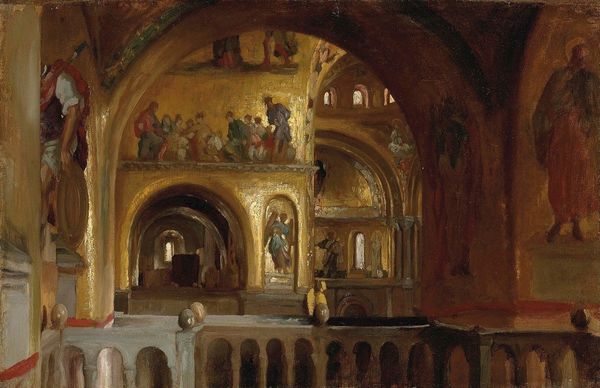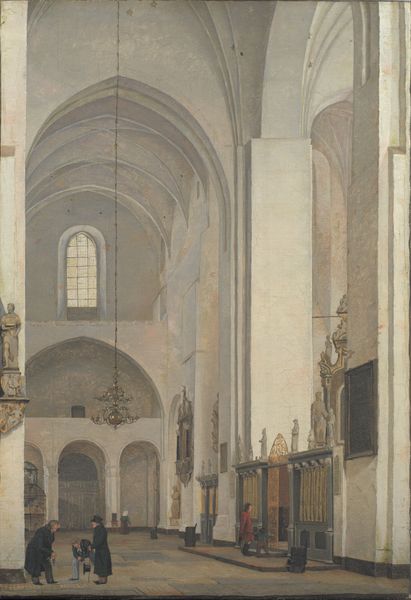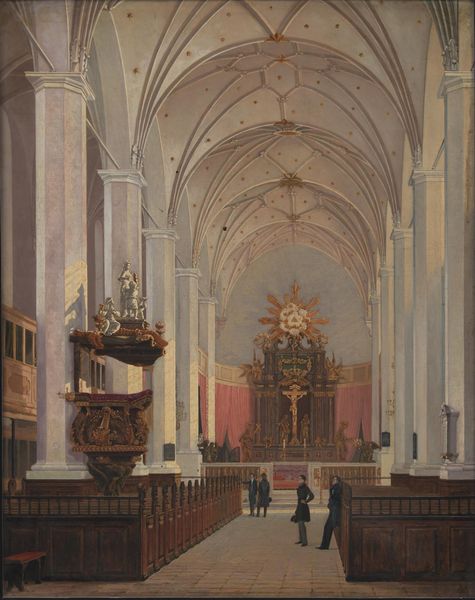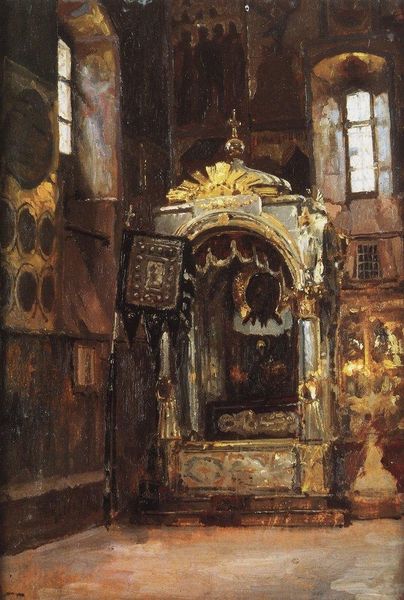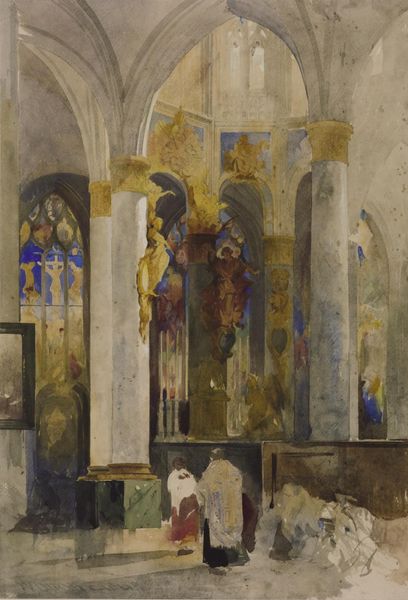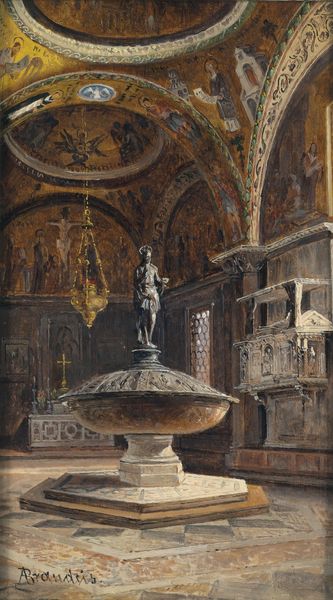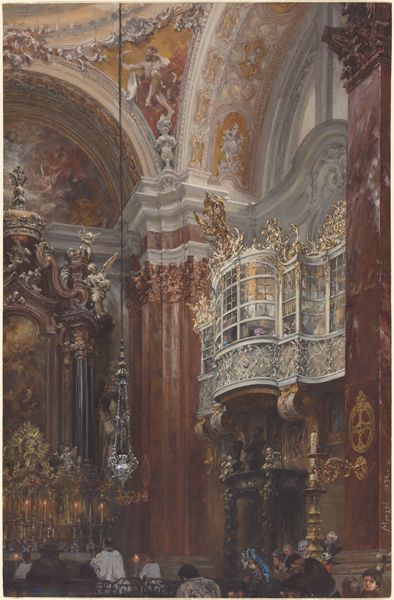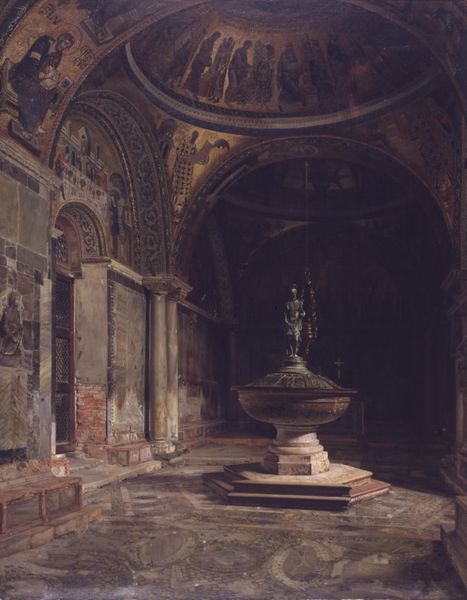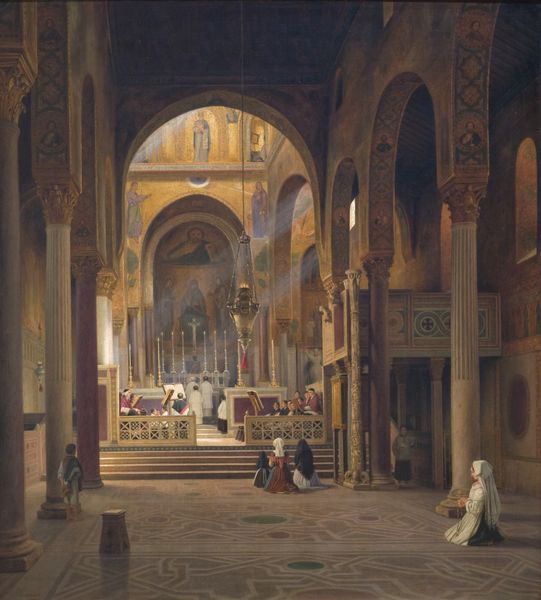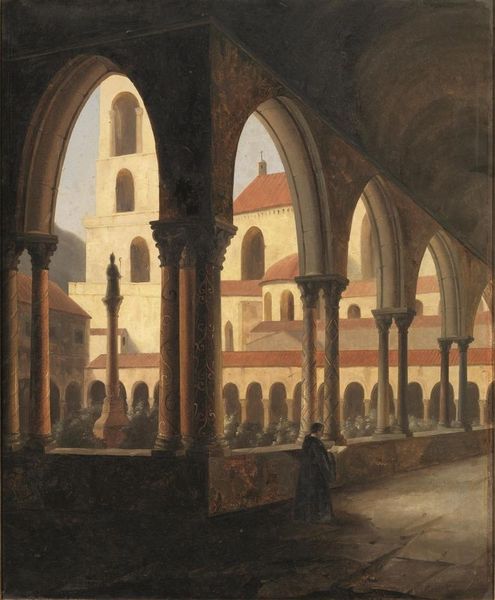
painting, oil-paint, architecture
#
painting
#
oil-paint
#
oil painting
#
romanticism
#
history-painting
#
architecture
Copyright: Public domain
Editor: We're looking at Jenaro Pérez Villaamil's oil painting, *La Capilla De San Isidro En La Iglesia De San Andrés De Madrid*, created in 1843. It evokes a somber and reverent mood with its muted colors and shadowy interior. How do you approach understanding this work, focusing on its inherent visual elements? Curator: My primary interest lies in the interplay of form and composition within the canvas. Note how Villaamil employs a subdued palette, strategically manipulating light and shadow to guide the viewer's eye through the architectural space. Consider, too, how the rhythmic repetition of arches and columns contributes to the painting's overall structure, creating a sense of depth and enclosure. The small human figure at the front underscores the church's cavernous scale. Editor: The way you describe it makes the architecture almost the subject, instead of, say, its religious purpose. Is the subject secondary in this method of interpreting art? Curator: Not secondary, but accessed through the visual vocabulary. The careful articulation of line, texture, and color creates a self-referential system of meaning. We could consider the rough brushstrokes versus smoother areas; how do those applications of paint generate differing senses of weight and depth, of light and dark? Villaamil's attention to these formal elements contributes to the viewer's phenomenological experience of the work. Editor: That is insightful. Focusing on brushstrokes gives me a tangible way to think about the artistic process. I realize I tend to consider subject first and materials last. Curator: Precisely! Formalism trains us to "read" a painting the same way we might analyze poetry: attentive to structure, pattern, and language. Editor: Thank you. I'm going to practice seeing compositions more analytically moving forward.
Comments
No comments
Be the first to comment and join the conversation on the ultimate creative platform.
